Crema Catalana, a Spanish custard flavored with citrus and cinnamon and finished with caramelized sugar, is a lighter and easier version of crème brûlée. Make this gluten-free dessert to wow a crowd at your next dinner party, holiday, or special occasion.
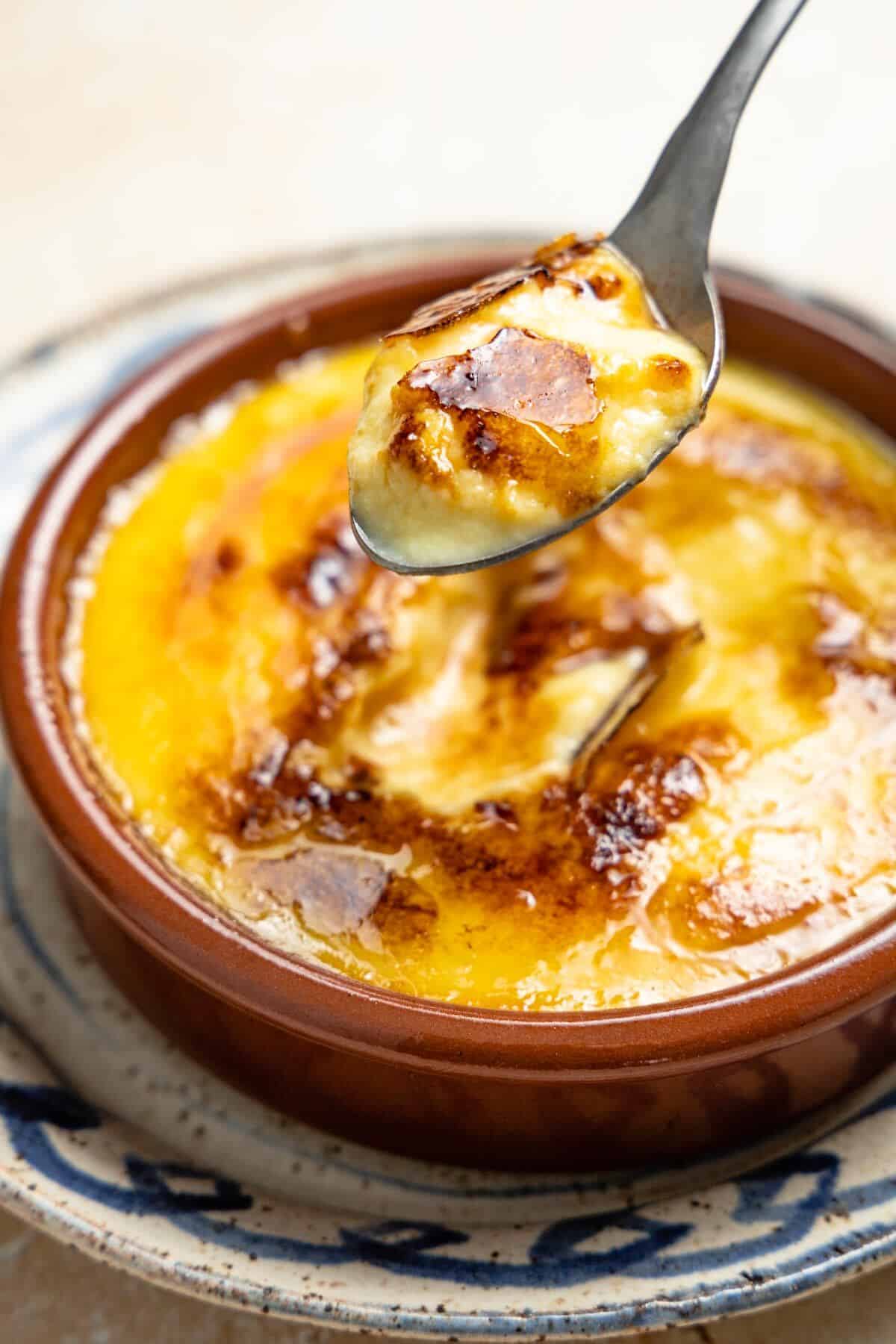
One of my favorite food customs in Spain is the menu del día. On weekdays, restaurants offer an inexpensive fixed-price menu for lunch, which includes bread, three courses and a drink.
The price may be moderate, but the meal is anything but average. After two savory courses, the quintessential grand finale is Crema Catalana and a strong coffee. Trust me, this traditional Spanish dessert is worth saving room for!
Crema Catalana dates back to at least the 14th century, with its first written appearance in a cookbook. Today, it is the official dessert for Saint Joseph’s Day (March 19, Spain’s version of Father’s Day) and the official dessert of Catalonia. However, I think you should enjoy this Spanish dessert whenever the mood strikes.
Table of Contents
What’s the Difference Between Crema Catalana and Crème Brûlée?
While both Crema Catalana and crème brûlée are custard desserts finished with a caramelized sugar crust, there are slight nuances between the world-famous crème brûlée and its lesser known neighbor from the south, Crema Catalana.
- Crème brûlée is a slightly richer French vanilla custard made with heavy whipping cream baked in a water bath.
- Crema Catalana is a Spanish custard made with milk and flavored with citrus and cinnamon. Because Crema Catalana uses milk instead of heavy cream, it is lighter and more delicate than crème brûlée.
In addition to the differences mentioned above, Crema Catalana is typically less sweet and made on the stove rather than the oven, making it easier to judge when it is done. And, as an added bonus, you don’t need to trifle with a water bath.
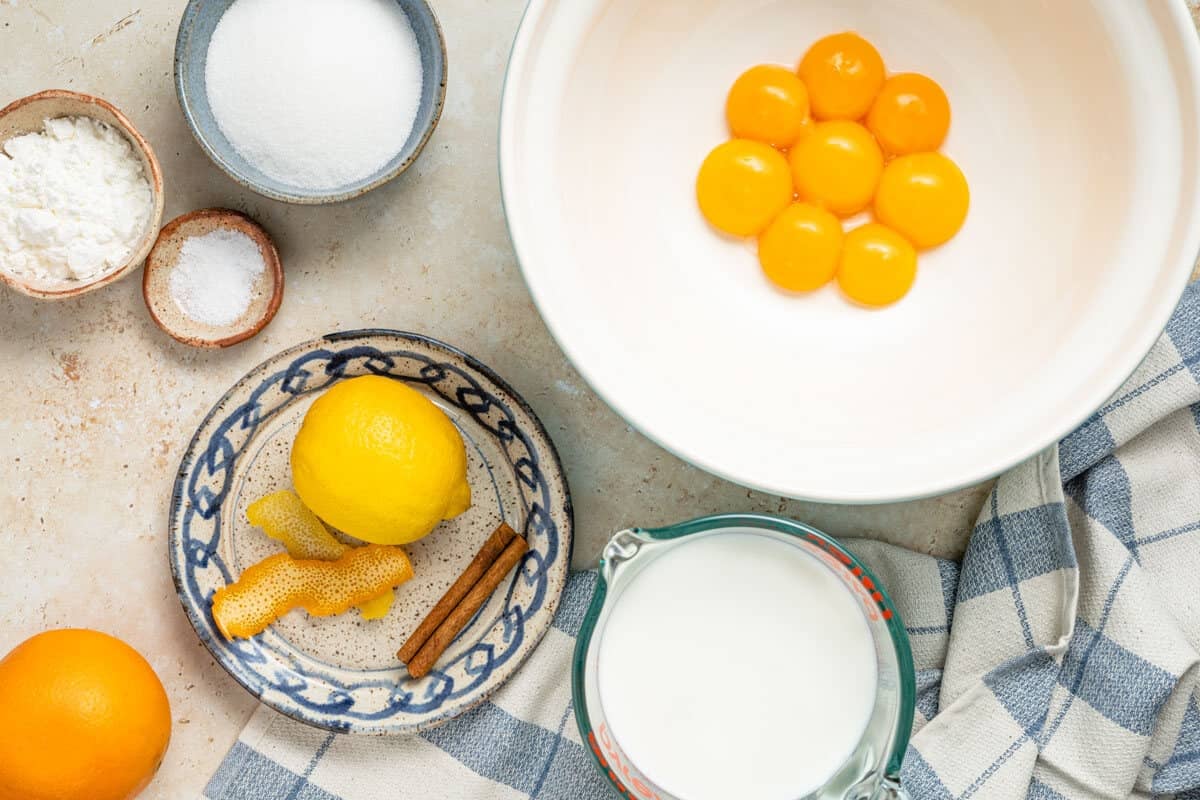
What is in Crema Catalana?
Crema Catalana uses common, easy to source ingredients that you probably already have in your kitchen. With its simple ingredient list, I wouldn’t try substituting any ingredients or amounts, or you risk textural issues with the custard.
- Whole milk: For the creamiest texture, use whole milk. Don’t substitute it with reduced-fat milk or heavy cream.
- Egg yolks: Egg yolks are the main thickener for the custard and make it richer than using whole eggs. You can reserve the whites for an egg white frittata, meringue, cocktails, or nougat.
- Cornstarch: Cornstarch is another thickener that also helps to prevent the egg yolks from curdling.
- Sugar: Regular or extra-fine granulated sugar works best for both the custard and the caramel.
- Zest: Crema Catalana is typically flavored with both orange and lemon zest, but you could also use just one or the other. Use a vegetable peeler to peel a long, wide strip of zest. If there is a lot of pith (the bitter white part under the zest), scrape it away with a small knife.
- Cinnamon stick: With a more delicate flavor than ground cinnamon, one cinnamon stick gently infuses the milk on the stove.
- Salt: Salt enhances the flavors of not only savory dishes but sweet dessert recipes as well.
How to Make this Recipe
Surprisingly, Crema Catalana doesn’t require much hands-on work. You have to separate eight eggs, but, after that, the hardest part is patiently waiting the four hours it takes to chill. Torching the sugar is my favorite part: it’s the most dramatic and typically elicits plenty of “oohs” and “ahhs,” but is remarkably easy to accomplish.
- Get ready: Set yourself up with a fine mesh sieve set over a large measuring cup or mixing bowl with a spout. Gather six 6-ounce ramekins.
- Whisk the eggs: In a large mixing bowl, whisk together 1/2 cup sugar, 3 tablespoons cornstarch, 1/2 teaspoon salt, and 8 egg yolks until the mixture becomes pale and smooth. Set aside.
- Infuse the milk: In a medium, heavy-bottomed saucepan over medium-low heat, bring 4 cups milk, 1 strip each of lemon and orange zest, and 1 cinnamon stick just to a simmer. While it heats, stir the milk occasionally to prevent it from scorching.
- Temper the eggs: As soon as the milk reaches a simmer, remove the pan from the heat. Use a pair of tongs to discard the zest and the cinnamon stick. With one hand, slowly pour the hot milk, one splash at a time, into the bowl of yolks while whisking constantly with your other hand. Slowly mixing the hot milk into the yolks tempers them, gradually heating them without curdling.
- Thicken and simmer: Once all of the milk has been incorporated, pour the mixture back into the saucepan. Cook over medium-low heat, whisking constantly, until the custard thickens and comes to a simmer, about 5 minutes. Once it comes to a bubble, continue cooking, still whisking, for 1 minute.
- Strain and pour: Take the custard off the heat and pour it through the sieve into a large measuring cup or spouted mixing bowl. Divide the custard amongst the six ramekins. Use plastic wrap to cover each ramekin, laying the wrap directly onto the surface of the custard. Let it cool almost to room temperature, and then transfer to the refrigerator overnight, or for at least 4 hours.
- Ignite!: When you’re ready to serve, sprinkle the top of each custard with 2 teaspoons of sugar. Ignite your kitchen torch and hold the flame about 4 inches above the layer of sugar. Move the flame in circles until the sugar melts and caramelizes to a deep brown.
- Serve: Serve the custards right away. Sugar is hygroscopic, meaning it absorbs moisture from its surroundings. The crisp caramel topping will begin to absorb water, soften, and eventually liquefy.
Tips for Cooking Crema Catalana
Most problems with custard relate to overcooking. This recipe is more resilient because it uses cornstarch and doesn’t bake in the oven. Here are a few tips for making the best Crema Catalana:
- Don’t add the milk too fast. If you add the hot milk to the eggs too quickly, the eggs may curdle. Unfortunately, if this happens, it’s best to start over and be sure to incorporate the milk slowly and whisk constantly.
- Simmer the custard for just 1 minute. It is also possible to overcook the custard after it thickens on the stove. Once the custard begins to bubble, cook it for no more than one minute, then take it off the heat. It’s important to fully cook the cornstarch so it doesn’t break down into a loose custard, but if you cook it too long, the egg yolks will begin to curdle. If it hasn’t gone too far, a sieve should take care of any lumps. Lumpy custard is still edible, but the texture may not be as pleasant.
- Stir constantly. A constant stir, both while you’re tempering the eggs and cooking on the stove, will prevent the eggs from curdling.
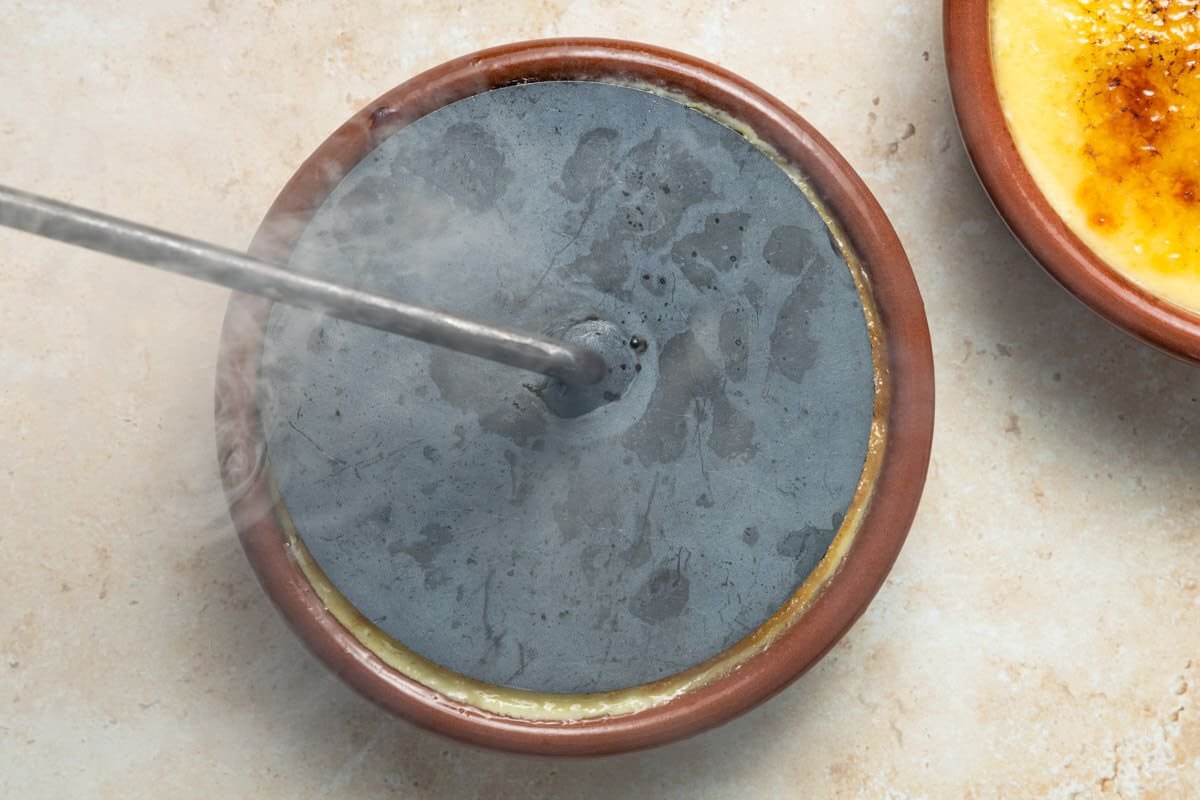
How to Create the Caramelized Sugar Crust
The sugar crust on Crema Catalana is traditionally made with a pala, an iron disk with a handle heated directly in a fire or on the stove. While satisfying to use, pala’s are tricky to clean and can be a hassle compared to a handy kitchen torch.
A kitchen torch is easy to order online if you don’t already have one. It’s just as gratifying as a pala, and gives you better visibility into how the caramelization is progressing.
To brûlée the custard, hold the flame about 4 inches above the sugar and move it in slow circles to evenly heat the surface. The sugar will first melt, then caramelize. Stop applying the torch when the sugar turns a deep brown but isn’t burnt.
If you don’t have a kitchen torch, you can use your oven’s broiler—just keep a very close eye on things as it’s very easy to burn the sugar.
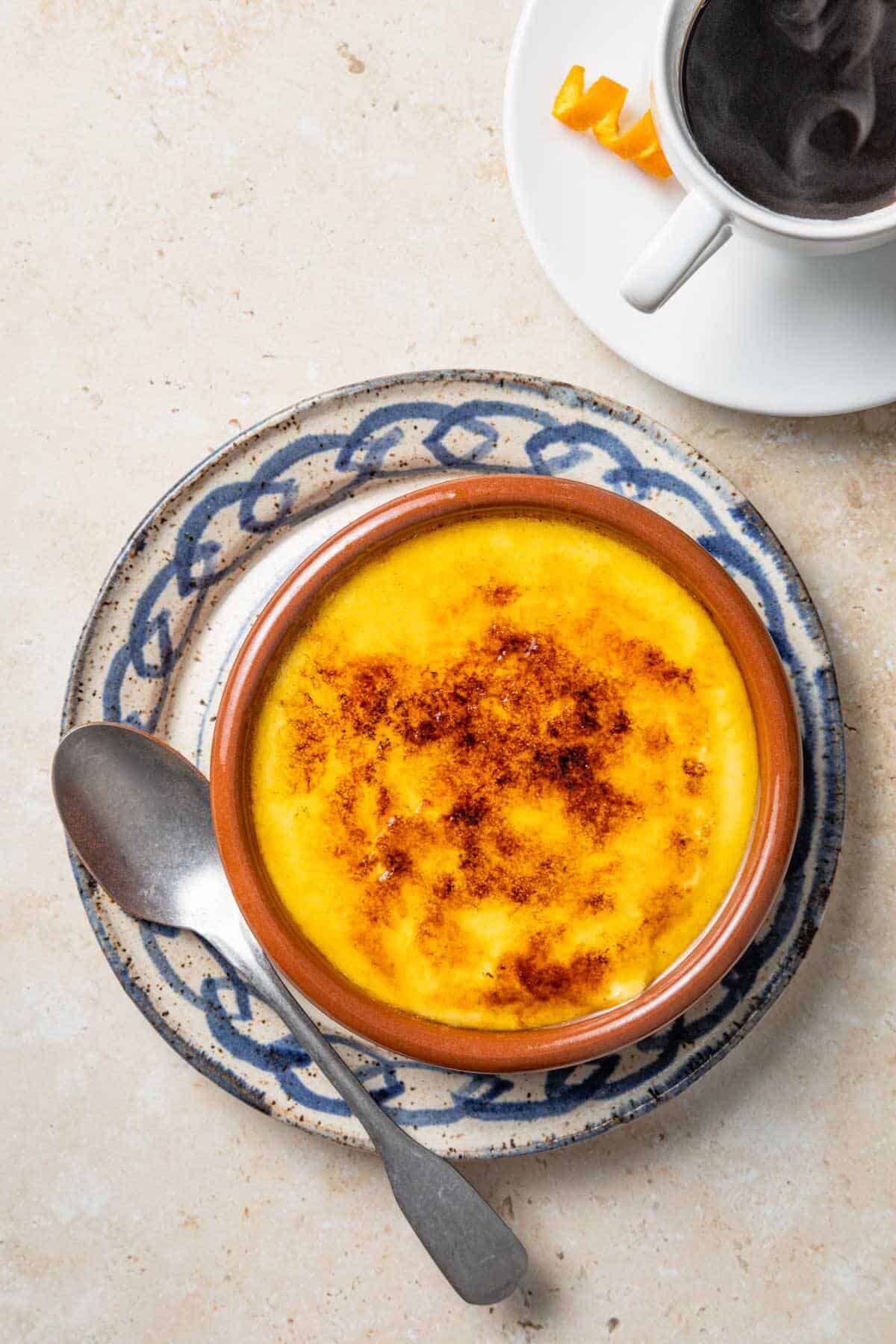
What to Serve with Crema Catalana
In Spain, you can go out for Crema Catalana whenever you want. But in my home kitchen, far away from Spanish restaurants, a dessert like Crema Catalana feels more celebratory. Luckily, this recipe is well-suited for dinner parties. Make the custard up to 4 days in advance and save the flaming theatrics for when your guests are a captive audience!
Crema Catalana is a classic Spanish dessert versatile enough to serve after just about any meal, but the drama of the caramelized crust is especially welcome on special occasions.
Make for a big festive dinner party, with a simple starter of Pan Con Tomate and a show stopping centerpiece like Easy Seafood Paella or Oven Roasted Whole Mackerel.
Dive into these Delicious Desserts
Browse all Mediterranean recipes.
Visit Our Shop
The Mediterranean Dish Cookbook
120 Bold and Healthy Recipes You’ll Make On Repeat
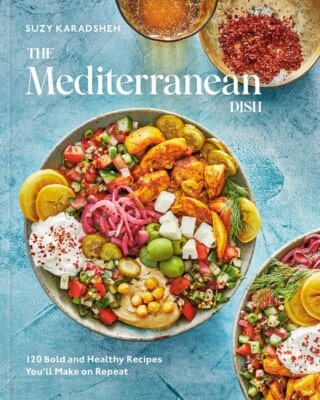
Crema Catalana
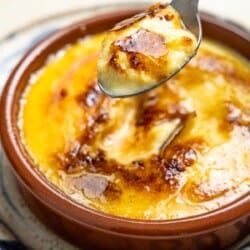
Ingredients
- 3/4 cup (150g) granulated sugar, divided
- 3 tablespoons cornstarch
- 1/2 teaspoon salt
- 8 egg yolks
- 4 cups whole milk
- 1 strip lemon zest
- 1 strip orange zest
- 1 cinnamon stick
Instructions
- Get ready: Set a fine mesh sieve over a large measuring cup or spouted mixing bowl. Gather six 6-ounce ramekins.
- Whisk the eggs: In a large bowl, whisk together 1/2 cup (100g) of the sugar, the cornstarch, and salt. Add the egg yolks and whisk until the mixture becomes pale and smooth, about 1 minute. Set the bowl on a damp tea towel to prevent it from sliding in the next steps.
- Infuse the milk: In a medium, heavy-bottomed saucepan, bring the milk, lemon zest, orange zest, and cinnamon to a simmer over medium-low heat. Stir the milk occasionally to prevent it from scorching.
- Temper the egg mixture: As soon as the milk reaches a simmer, take the pan off the heat. Use tongs to remove the zest and cinnamon stick. With one hand, slowly pour the hot milk into the bowl of yolks, and whisking constantly with your other hand.
- Whisk and simmer: Once all of the milk has been incorporated, pour the mixture back into the saucepan. Cook over medium-low heat, whisking constantly until the custard thickens and comes to a simmer, about 5 minutes. Once it begins to bubble, continue cooking, still whisking, for 1 minute.
- Strain, pour, and chill: Take the custard off the heat and pour it through the sieve into the large measuring cup or mixing bowl with a spout. Pour the custard into the ramekins. Cover each ramekin with plastic wrap, draping the plastic directly on the surface of the custard. Let it cool almost to room temperature, then transfer to the refrigerator overnight, or at least 4 hours. The custards will keep in the fridge for up to 4 days.
- Ignite!: When you’re ready to serve, use the reserved 1/4 cup (50g) sugar to sprinkle over the top of each custard, about 2 teaspoons of sugar per custard. Ignite your kitchen torch and hold the flame about 4 inches above the layer of sugar. Move the flame in circles until the sugar melts and caramelizes to a deep brown.
- Serve: Serve immediately, before the caramel softens.
Notes
- The custard can be made up to 4 days in advance and stored, wrapped in plastic in your refrigerator.
- Make sure to whisk constantly whenever the eggs are over heat: It will prevent them from curdling.
- Visit our shop to browse quality Mediterranean ingredients including olive oils, honey, jams and spices.


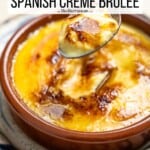
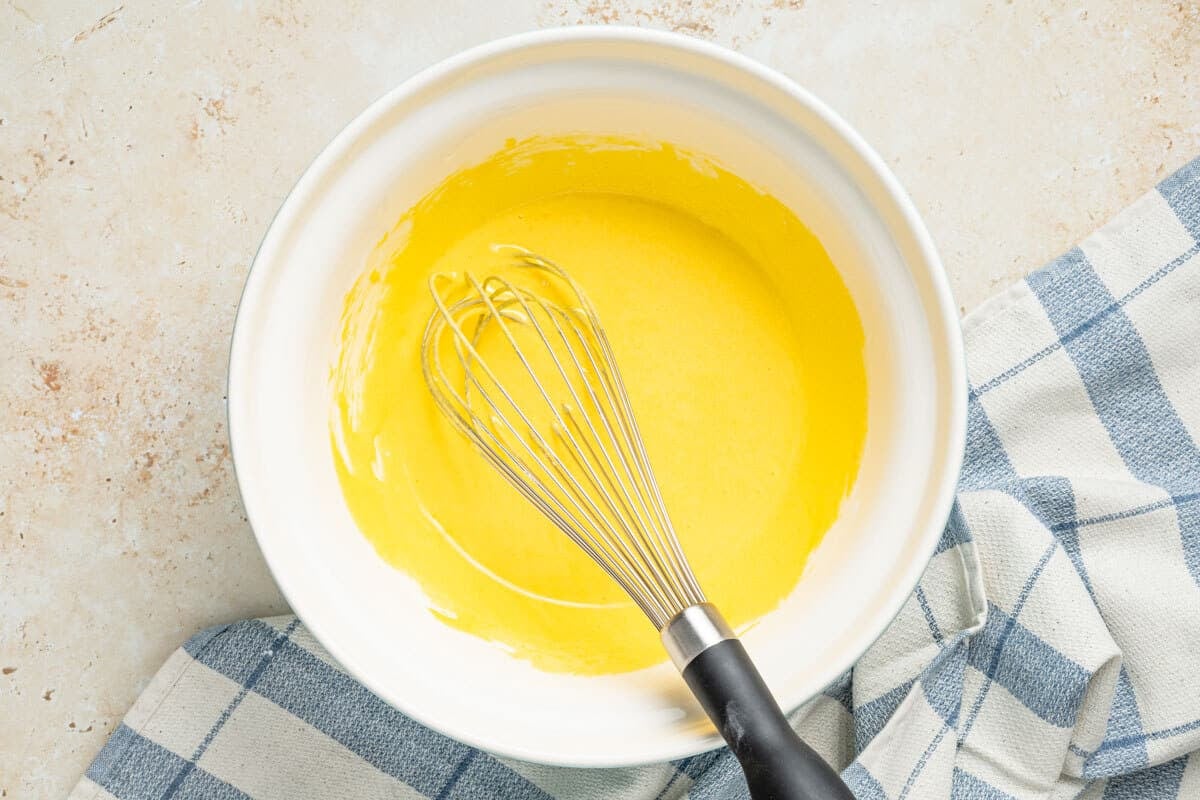
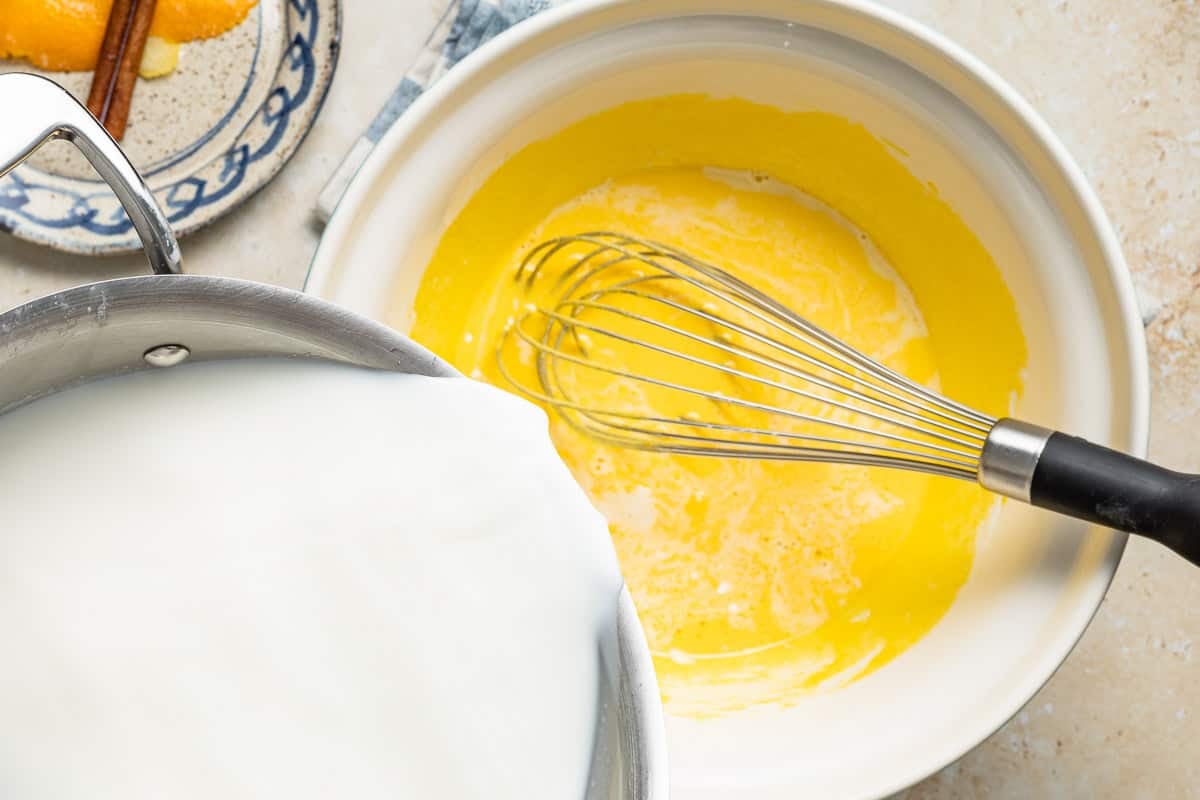
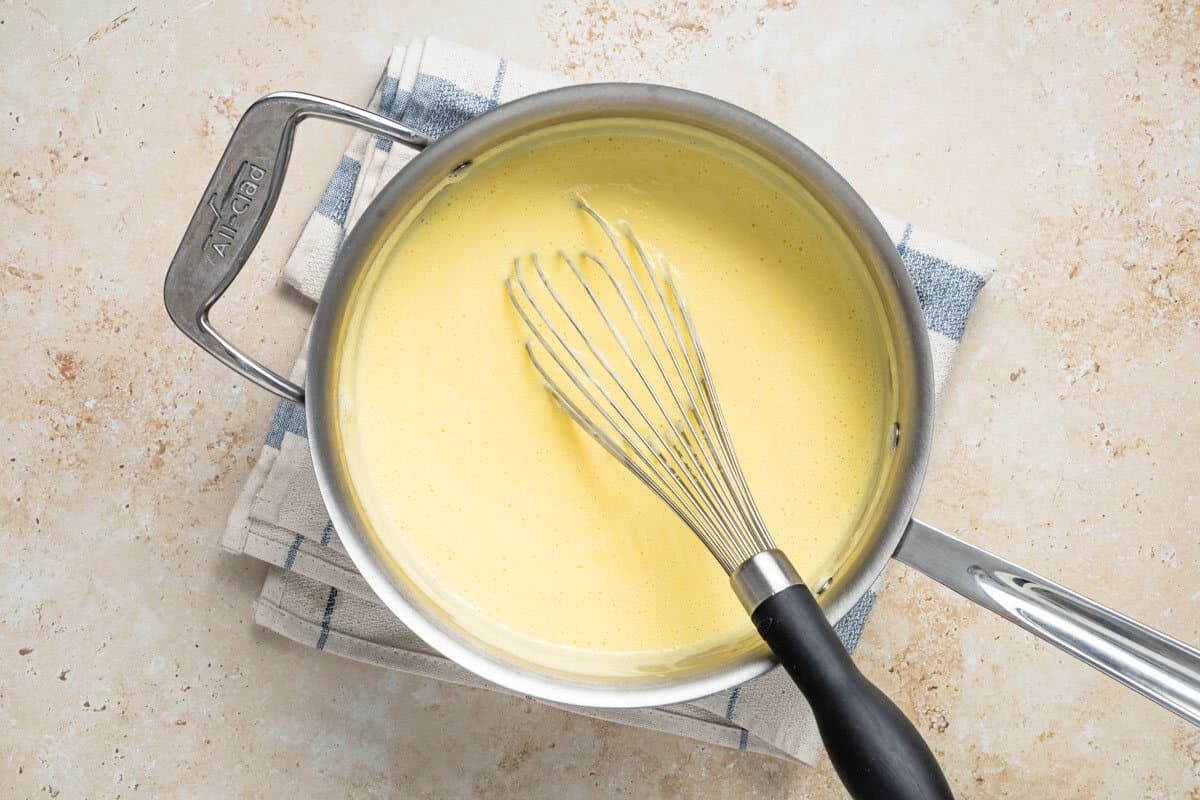
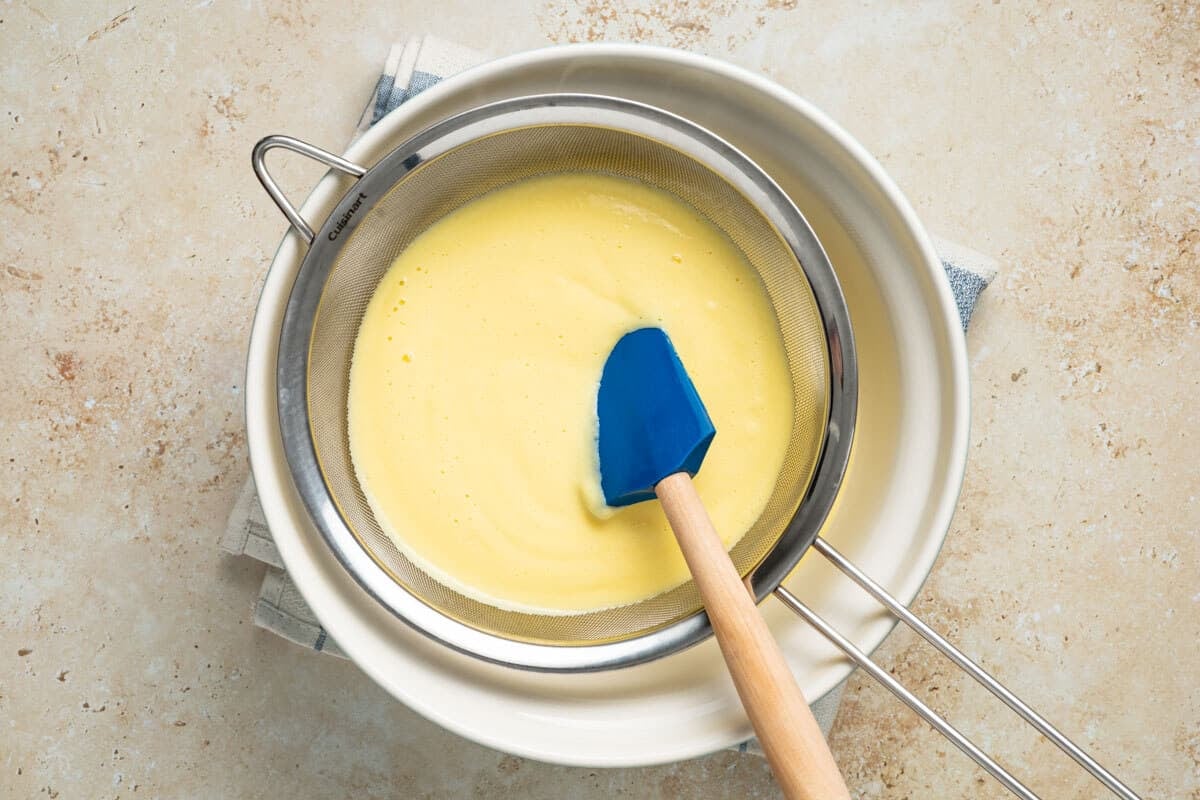
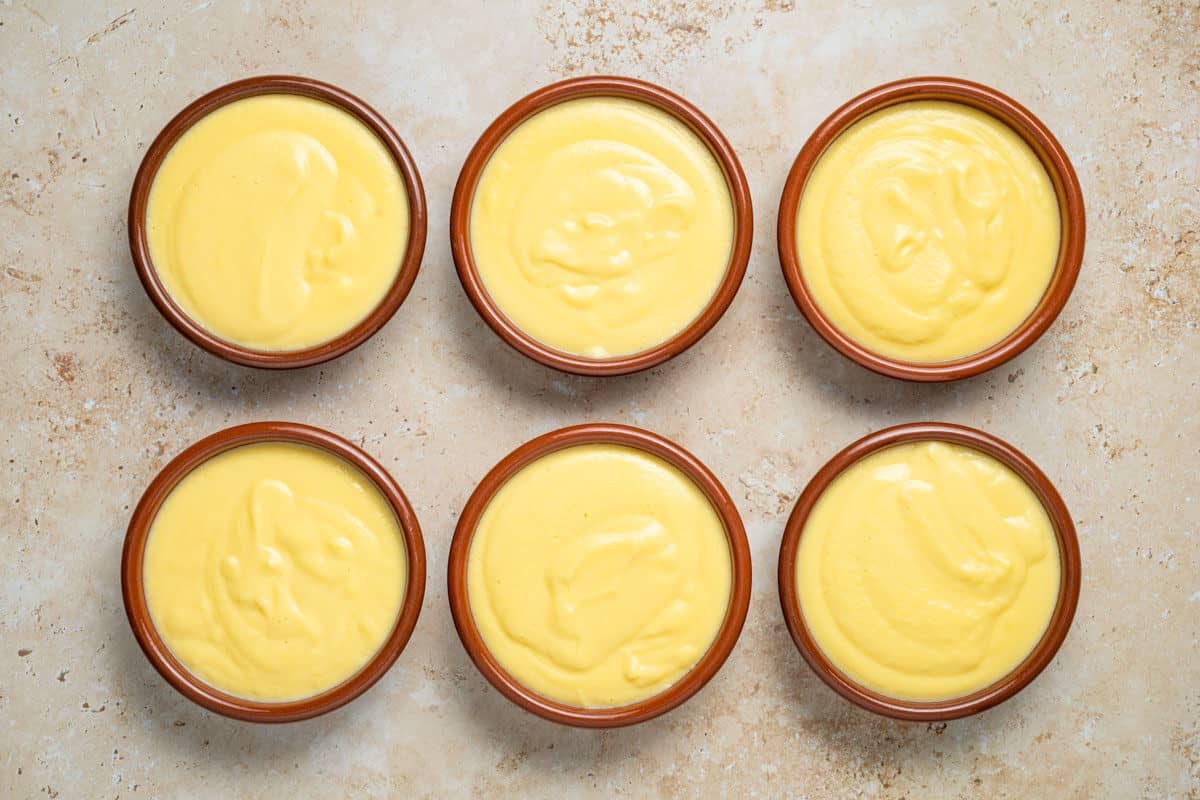
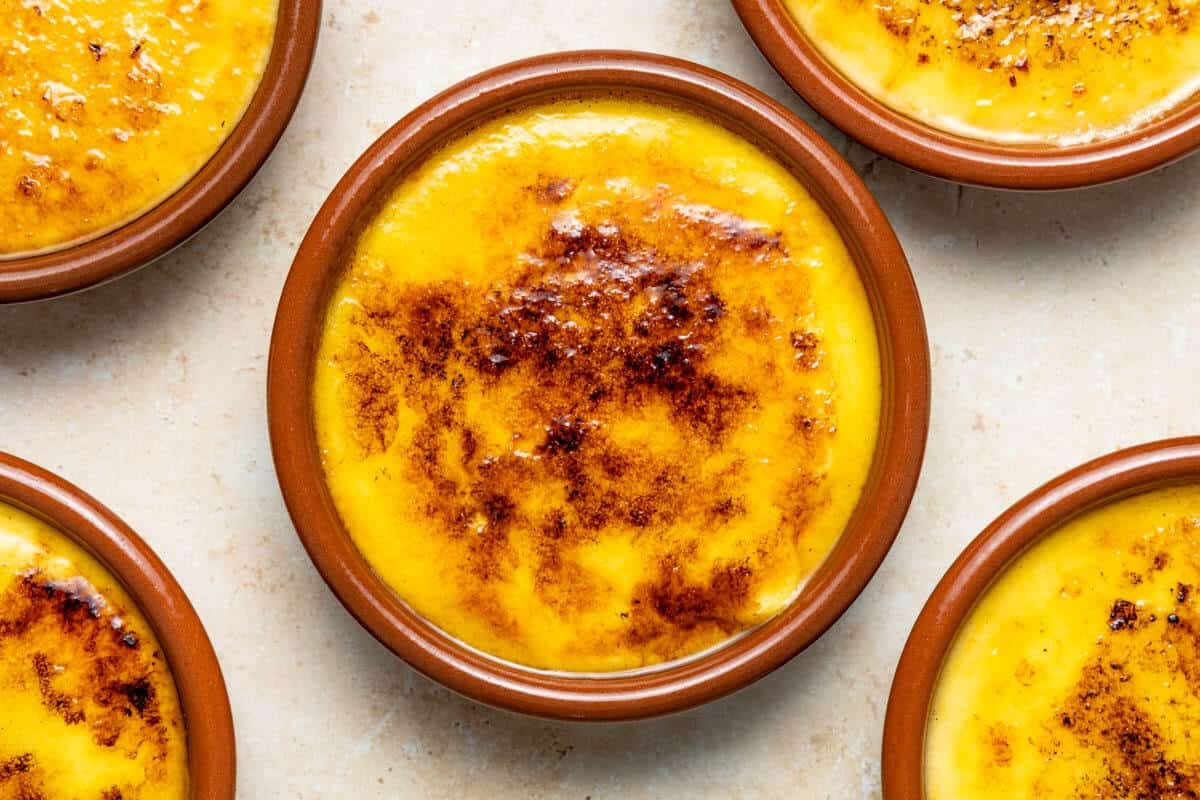
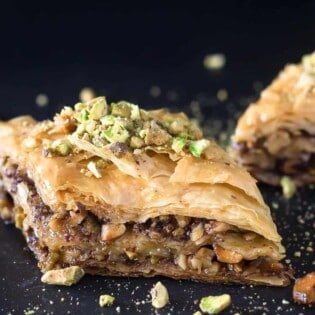
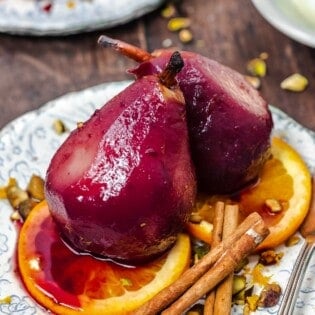
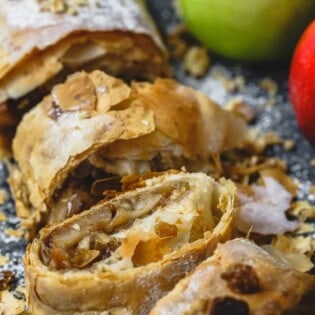
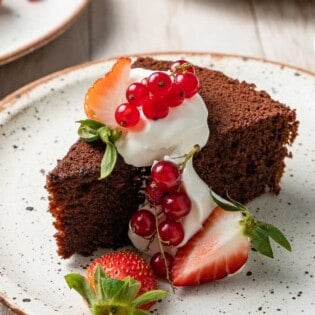
Great recipe description!
Should I store it in the fridge directly or should I wait for the mixture to cool down first?
Hello! I checked with Mark, who developed this recipe. He said that yes, the custards should cool to close to room temperature before placing them in the fridge. You’ll still want to cover them with plastic wrap directly on the surface, though, to prevent a skin from forming.
Is there any specific reason to strain other than to remove the citrus peels and cinnamon? Or can I just pull them out of pot? Not sure if its meant as part of perhaps thinning it out… Thank you
Let the milk cool first before mixing into eggs.
Add more fruit zest and maybe some juice too.
Adding juice will cause the milk to curdle. Just use the zest. Also no point in letting the milk cool before adding eggs. if you go little by little (also known as tempering) you wouldn’t have to let the milk cool.
Amazingly delicious!!!!